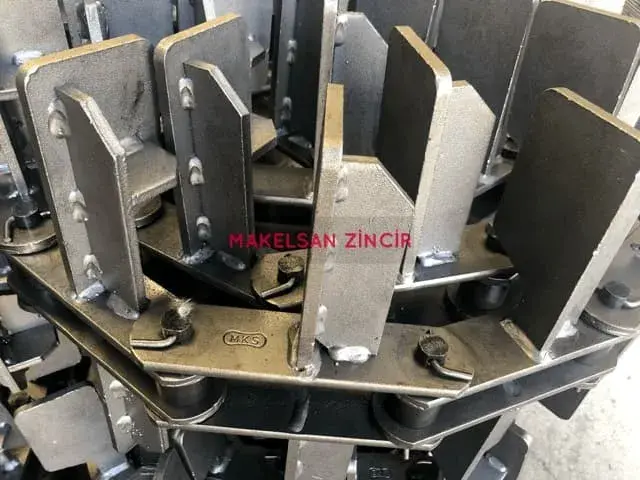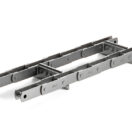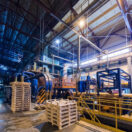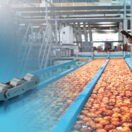Many innovations in conveyor technology have provided improved safety and productivity over the last three decades. Changes in this field, however, were not always for the better.
How Is Conveyor Chain’s Wear Life Understood?
An innovation is the introduction of double-teeth sprockets designed to provide more options for customers when designing conveyor chain systems.
However, experienced technical engineers do not recommend sprockets with an equal number of teeth.
In cases where a sprocket has an equal number of teeth, the same tooth engages with the same cylinder with each rotation, resulting in unequal wear and service life being shortened.
A similar situation will occur if the teeth number of the small chain sprocket is the divisor of the teeth number of the conveyor chain.
Choosing a sprocket with an odd number of teeth will double the life cycle.
Double-pitch sprockets are often overlooked; however, they are excellent for saving space and have a longer life cycle than standard sprockets.
Double-pitch sprocket chains, which are suitable for long-pitch chains, have more teeth than standard chain sprockets in the same pitch circle diameter and distribute wear evenly across the teeth.
Today, most conveyors include electronic load monitoring in the control system. Although this is a useful safety feature, it is recommended by technical engineers that these be used with cutting pin sprockets.
Electronic detection is ideal for giving the operator enough time to stop before damage occurs due to a slow increase in load (due to damaged bearings or contamination).
In the event of a jam or mechanical smash where the load increase is instant, the sensor will not automatically cut the connection between the engine and the operated load, which may cause severe damage to the conveyor chain and its additions. Therefore, a shear pin chain sprocket is also required.
Shear pin sprockets are initially more expensive than standard sprockets, but they reduce downtime and save replacement costs. When a conveyor is overloaded and potentially dangerous, the shear pin breaks the conveyor and limits the damage by ceasing it.
After the load or deadlock is removed, only the shear pin should be replaced, allowing the conveyor to resume movement quickly.
Traditional chain sprockets are often overlooked, but they can provide significant benefits such as longer service life, less damage in the event of a conveyor failure, and lower replacement costs.
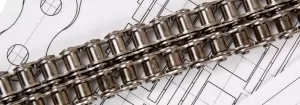

Points to Take into Consideration About Chain Conveyor Sprocket
To explain when a chain sprocket needs to be replaced
When a chain sprocket has worn to a certain extent, it may be causing rapid chain wear, and it will be required to be replaced as soon as possible. However, replacing it too soon will result in an unnecessary expense. You should be able to tell whether or not the chain sprocket is worn by examining the surfaces of the chain teeth.
When replacing sprockets, it is important to ensure that they are aligned properly with the shafts because misaligned sprockets are a common cause of premature chain wear.
The load is evenly distributed across the entire chain width, resulting in a longer service life, when the shafts and sprocket teeth surfaces are properly aligned.
For wriggle checks, a straight edge, nylon line, or laser sighter should be used at various points throughout the sprockets’ processed faces. You should take the keys home for a final check after the chain sprockets have been properly aligned.
Sprockets with induction-hardened teeth
Chain sprockets and small induction-hardened teeth. The induction-hardening of the teeth of the small conveyor chain sprockets only causes localized hardening in the surface of the teeth, and this means that the induction-hardened chain sprockets are intentionally hardened in the sprockets’ specific working area.
Even though the applicator coil is only exposed to the teeth profile to obtain this sensitive hardening, it still keeps the hole and other parts soft and flexible.
It is well known that hard conveyor chain sprocket bores cause premature wear in shafts, therefore only hardening the teeth via induction hardening may prevent these difficulties. Induction-hardening, particularly in heavy load operators or in heavy and abrasive environments, will extend the life of the conveyor chain sprocket.
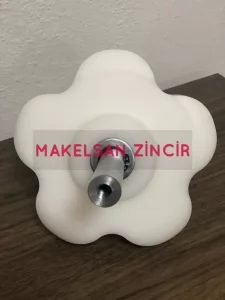


For a Long-Lasting Conveyor Chain
If your conveyor chain is typically run on metal or plastic wear strips, it is critical to consider the surface hardness and finished condition of the conveyor chain connection plates.
If the metal conveyor chain frictional profile is very hard, the side plates of the chain will wear out quickly, reducing the chain’s life significantly.
If you are running your conveyor chain on a plastic wear strip, then you can extend your wear strip’s life with deburring to remove all the sharp edges of the conveyor chain connection plates.
What is deburring?
Deburring is a simple process that includes ‘placing’ finished conveyor chain connection plates into a container in a special abrasive medium to remove sharp edges.
In conclusion, smoother plates with significantly longer wear lives are produced.
If you want to extend the life of the plastic conveyor chain frictional profiles, we strongly recommend you request that the conveyor chain side plates be installed.
The potential savings in spare wear strips, costly machine downtimes, and engineer labor costs will far exceed a slight increase in the base price of the deburred conveyor chain.

